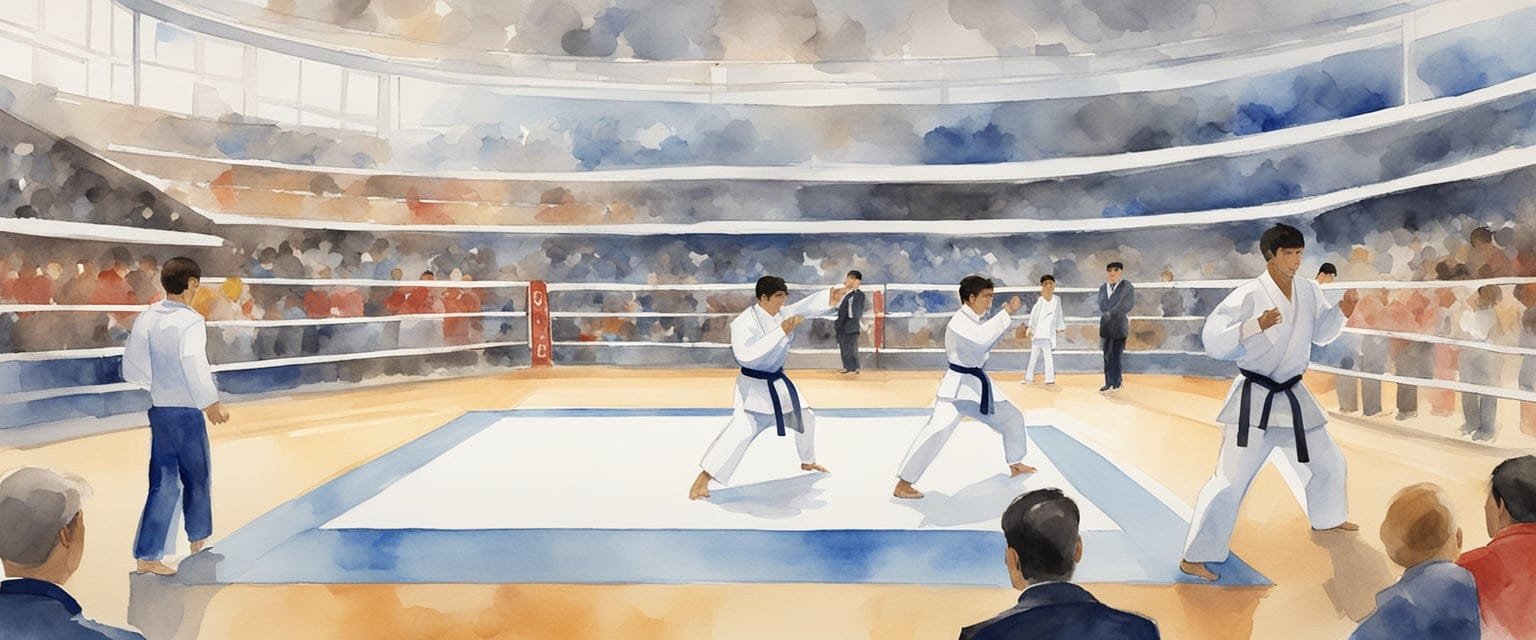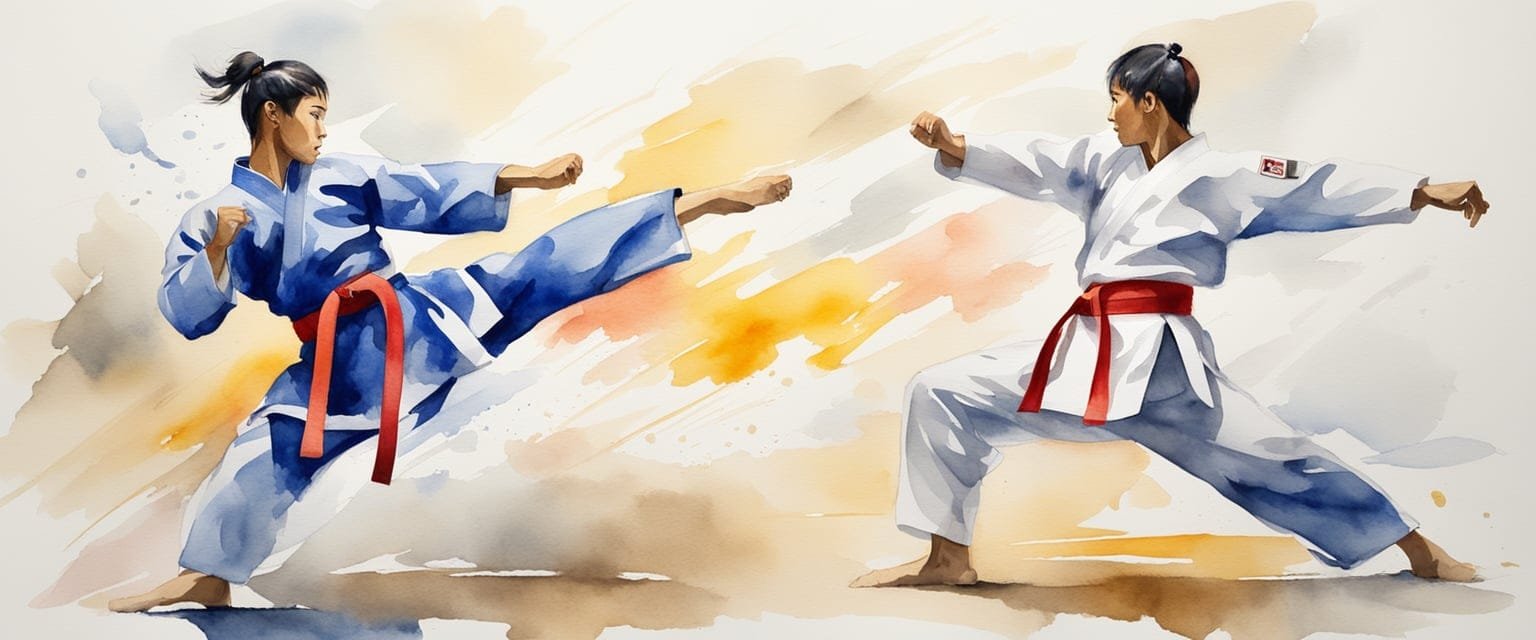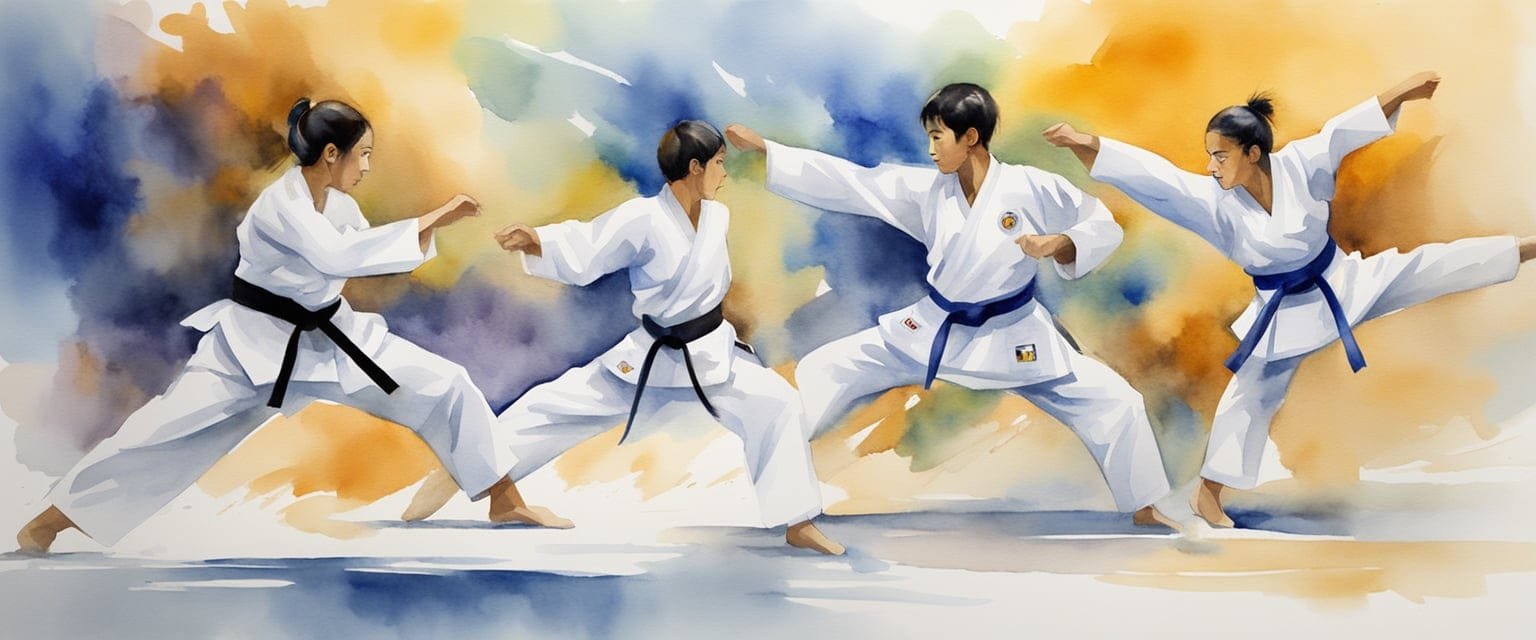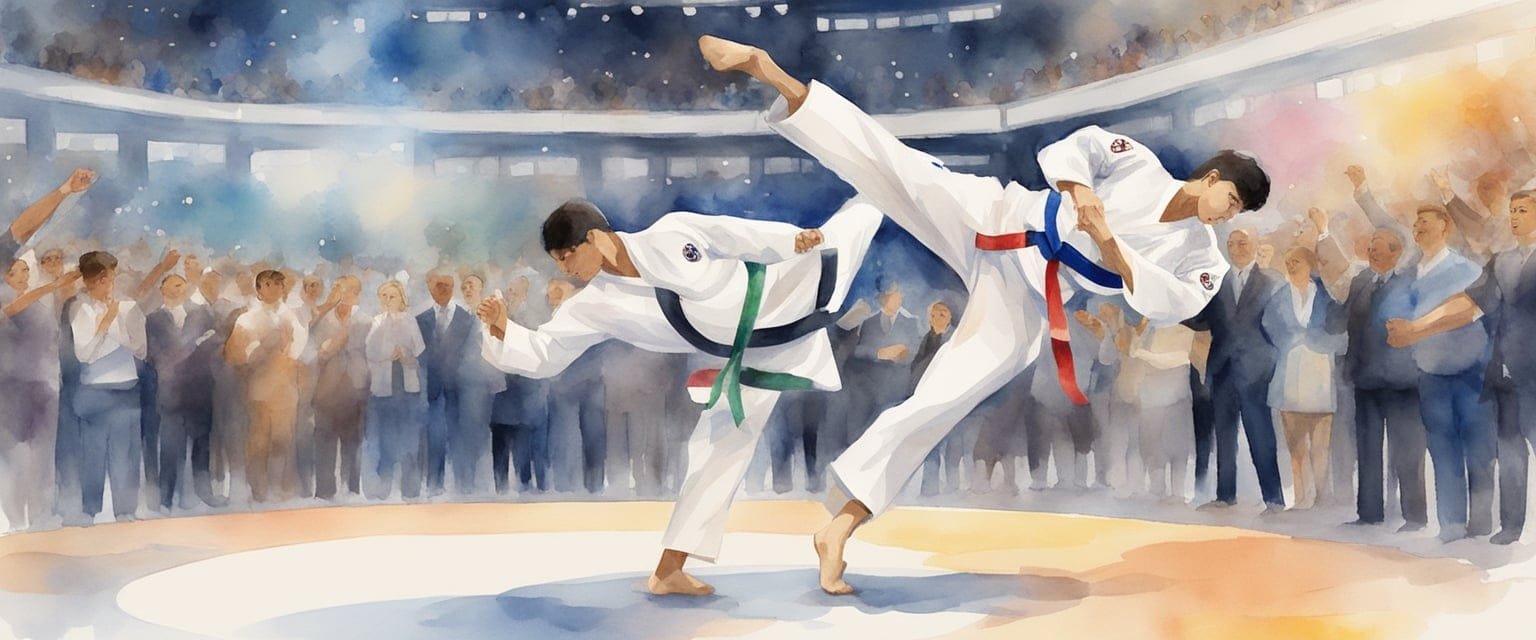Taekwondo is more than just a martial art; it is an exciting and dynamic sport that has a rich history and a bright future in the Olympic arena. This ultimate guide will help you understand everything from the rules and competition format to key techniques and athlete preparation. Whether you’re a beginner or a seasoned fan, this article will take you through the essentials of Olympic Taekwondo.

I’ve always been fascinated by the skill and strategy involved in Taekwondo. As it evolves with each Olympic Games, staying updated on the latest techniques, equipment, and competition strategies is key to appreciating this incredible sport. From the thrill of a perfectly executed kick to the tension of high-stakes matches, there’s a lot to discover.
Let’s dive into the world of Olympic Taekwondo and uncover what makes it such a compelling sport, both for athletes and fans alike.
Key Takeaways
- Learn about the evolution of Taekwondo and its journey to the Olympics.
- Discover essential rules that govern Olympic Taekwondo competitions.
- Explore strategies and techniques that can enhance performance in the ring.
The History and Evolution of Taekwondo
Taekwondo has a rich history that spans over 2,000 years, with roots deeply embedded in Korean culture. From its beginnings as a traditional martial art in South Korea to its evolution into a dynamic Olympic sport, Taekwondo has surged in popularity across the globe. I find its journey fascinating, marked by significant milestones.
From Korean Roots to Olympic Sport
Taekwondo originated in Korea, influenced by ancient martial arts like Subak and Taekkyon. Initially, it focused on self-defense and combat skills. After World War II, various Korean martial arts schools unified their practices, and in 1955, the Korea Taekwondo Association was formed, formally establishing the name “Taekwondo.”
The sport’s global recognition grew, particularly when it was included as a demonstration sport at the Seoul 1988 Olympics. This paved the way for its official inclusion in the Olympic program at the Sydney 2000 Games. Seeing Taekwondo at the Olympics truly showcased South Korea’s martial art to the world, inspiring many to practice it.
Milestones: Rio 2016 to Paris 2024
At the Rio 2016 Olympics, Taekwondo reached new heights. The competition featured thrilling matches and new stars emerged. One memorable moment was when Steven Lopez, a decorated American athlete, competed one last time.
As we look toward the Paris 2024 Games, there is much excitement about how Taekwondo will evolve. Athletes from all over the world will bring their talent and skill to the mat. I am eager to see how the new rules and technology will impact the sport. The Tokyo 2020 Olympics (held in 2021 due to the pandemic) also laid the groundwork, as younger athletes dazzled audiences with impressive techniques.
Understanding Taekwondo as a Sport
Taekwondo is not just a sport but a blend of skill, discipline, and strategy. The focus on technique and scoring makes it unique and exciting. Let’s dive into the key principles that shape this martial art.
Key Principles of Technique and Conduct
In Taekwondo, technique is everything. Each movement requires precision and practice. Kicks are essential, and I’ve learned that a valid kick must be executed with proper form. This ensures it can score points effectively.
Additionally, athletes must maintain good conduct throughout the match. Bowing to the referee and opponent shows respect. This is part of the tradition and keeps the sport honorable. A blend of respect, technique, and sportsmanship elevates the experience for everyone involved.
Deciphering the Scoring System
The scoring system in Taekwondo can seem complex at first. Points are awarded for valid techniques that hit designated scoring areas. Kicks to the head and body are legitimate targets.
Each valid point scored is tracked using electronic systems. Fighters wear special socks to record valid kicks and the judges monitor the force and accuracy. If a kick lacks enough power, it may not count.
This electronic method makes scoring clear and fair. It’s fascinating to see how technique and strategy impact the final score. Understanding how points are awarded adds another layer of excitement to each match.
Competition Format and Rules
In Olympic Taekwondo, the competition format is essential for understanding how matches unfold. Athletes compete in various weight divisions, follow strict rules, and have clear pathways to victory. Each match consists of specific rounds, overseen by trained officials who ensure fair play.
Weight Divisions and Match Progression
Taekwondo has several weight divisions to make matches fair and competitive. These divisions ensure that athletes face opponents of similar body weight. The main weight categories range from featherweight to heavyweight.
In each match, athletes compete in a best-of-three format. Each match lasts three two-minute rounds. Points are scored for valid strikes to specific target areas. The athlete with the highest score after the rounds wins. If the score is tied at the end, a Golden Point Round occurs, adding more excitement and challenge.
Officials’ Roles and Responsibilities
Referees and judges play crucial roles in every taekwondo match. The referee controls the match flow, enforces rules, and ensures athlete safety. I admire their ability to make quick decisions under pressure.
Judges focus on scoring, determining point values for techniques based on their effectiveness and accuracy. They sit along the boundary lines, closely observing the action. Their scorecards provide a reliable assessment of the match, and I respect their expertise in the sport.
The Golden Point Round
The Golden Point Round is an exciting feature of Olympic Taekwondo. If a match ends in a tie after the standard rounds, this round decides the winner. In this round, the first athlete to score any point wins the match.
Athletes must be alert and strategic in this sudden-death scenario. It creates intense moments, as just one clean strike can lead to victory. This added layer of competition increases the stakes and thrill for both athletes and spectators.
Athlete Preparation and Strategy
Preparing for Olympic Taekwondo involves focused training regimens and smart strategies during matches. It’s essential to develop both physical skills and mental strategies to excel. Here’s how I approach these crucial elements.
Training Regimens for Elite Competitors
I believe that a tailored training regimen is key for success. Athletes often mix different techniques and drills to improve their kicks and punches. This includes:
- Plyometric Exercises: These help build explosive power, which is vital for effective kicks.
- Technical Drills: I practice various kick techniques, like the turning and back kick, to enhance my accuracy.
- Conditioning Workouts: These improve my endurance. I often include sprints and circuit training in my routine.
Training also involves sparring sessions, where I apply techniques in live situations. Watching videos of competitors also helps me refine my strategy.
Strategic Considerations During a Match
During a match, strategy becomes just as important as technique. I always consider my opponent’s style and adjust accordingly. Key points I focus on include:
- Distance Control: Maintaining the right distance allows me to strike effectively while avoiding my opponent’s attacks.
- Feints and Fakes: Using body language can trick my opponent, making them react to false moves.
- Adaptability: If my initial plan isn’t working, I adjust my strategy on the fly. This might involve switching from offensive to defensive techniques.
I find that staying calm and focused helps me execute my game plan better.
Equipment and Gear

When practicing Olympic Taekwondo, having the right equipment is essential for safety and performance. The gear not only protects me but also enhances my ability to compete effectively. Here’s a closer look at key items.
The Significance of the Dobok
The dobok is the uniform worn in Taekwondo. It is designed to be lightweight and comfortable, allowing for a full range of motion. The traditional color is white, symbolizing purity, but variations can exist.
Wearing a proper dobok can also help me get into the right mindset for training or competition. It connects me to Taekwondo’s rich history and tradition.
In competitions, the dobok must meet specific guidelines, which may vary by event. This means it’s worth investing in a quality dobok that fits well and lasts through rigorous practice.
Protection and Scoring Equipment
Safety gear is critical in Olympic Taekwondo. The trunk protector is worn to shield the torso, while the head protector guards against impacts to the head. These items help prevent injuries during sparring and matches.
I also use shin guards and gloves for added protection. They cushion my body during strikes, reducing the risk of injury. Additionally, electronic sensors are often included in gloves and trunk protectors. These sensors track points scored during matches, bringing a tech-savvy element to the sport.
Don’t forget about sensor socks! They provide an additional way to monitor performance and ensure a fair scoring system. Investing in quality gear is important for safety and to enhance my overall experience in Taekwondo.
Key Techniques and Movements

In Olympic Taekwondo, mastering essential techniques is vital for success. The focus is on effective kicks and punches, as well as advanced sparring strategies. These elements help me score points and control the flow of a match.
Kicks and Punches: The Basics
Kicks are at the core of Taekwondo. The most common types include the front kick, side kick, and turning kick. Each has its unique scoring areas. For example, head kicks can earn more points due to their difficulty.
When it comes to punching, timing and precision are critical. A well-timed punch can disrupt an opponent’s rhythm. Basic punches include the straight punch and hook punch. Practicing these techniques helps improve accuracy and power.
I focus on controlling my balance and posture while executing these moves. Fluid and precise movements are crucial for scoring points in competition.
Advanced Sparring Techniques
Once I’m comfortable with the basics, I can explore advanced sparring techniques. The spinning technique is particularly exciting. It involves a rapid turn followed by a powerful strike. This can catch opponents off guard.
The back kick is another valuable technique. It allows me to attack while facing away from my opponent. This kick is effective when countering attacks.
In sparring, I’ve learned to combine kicks and punches for better flow. Attacking and defending must happen simultaneously for maximum impact. Understanding distance is also essential, as it helps me know when to strike or evade.
Mastering these techniques takes time and practice, but they are rewarding skills in Olympic Taekwondo.
Competition Strategies and Actions

In Olympic Taekwondo, strategies play a crucial role in securing victory. Understanding penalties and developing endgame tactics can significantly impact the match outcome.
Managing Penalties and Point Deductions
To succeed, I must be aware of the penalties that can affect my score. A gam-jeom, or penalty, can cost me valuable points and disrupt my momentum. These penalties can come from illegal actions, such as excessive contact or falling without engaging.
It’s vital to maintain focus and avoid situations that lead to a penalty. I need to keep my balance and stay in control during exchanges to minimize falling. If I find myself losing points, I must quickly adjust my strategy. Staying calm and refocusing can help me regain my composure and ensure that penalties don’t define my performance.
Endgame Strategies: Securing the Win
When the match nears its conclusion, my approach shifts. If I have a 12-point gap over my opponent, I can adopt a defensive strategy to maintain my lead. This often involves controlling distance and avoiding risky attacks.
If the score is close, I may need to push for a knockout or a decisive point that can give me the edge. I must be active and aggressive, using swift kicks to score points. If my opponent appears fatigued, I can capitalize on openings to secure the win.
Regardless of the match’s status, staying adaptable is key to my success. Being aware of my opponent’s actions will help me make quick decisions that can directly influence the match’s outcome.
Taekwondo’s Impact and Influence
Taekwondo has made a significant mark on both sports and global culture. From inspiring athletes to shaping identities, its influence extends far beyond the mat. I admire how this martial art has become a symbol of dedication and excellence worldwide.
Notable Athletes and Olympic Legacies
One of the most inspiring figures in taekwondo is Jade Jones from Team GB. She captured the public’s attention during the London 2012 Olympics by winning a gold medal. Her determination and skill have encouraged many young athletes in Great Britain and beyond.
Jones isn’t the only notable athlete. Many competitors have excelled in Olympic tournaments, showcasing their talents. This success has helped secure taekwondo’s place in the Olympic sports arena, attracting more fans and participants.
With each competition, athletes continue to build the legacy of taekwondo. I believe their stories motivate others to pursue excellence in sports and life.
Taekwondo in Global Culture
Taekwondo has woven itself into global culture in many ways. It promotes respect, discipline, and self-improvement, values that resonate with people across cultures.
In addition to its competitive side, taekwondo is celebrated in various media, including films and documentaries. These portrayals help spread awareness of the sport and its rich heritage. Organizations like World Taekwondo work to promote these values, organizing events and workshops worldwide.
The impact of taekwondo is evident in communities that embrace it. More than just a sport, it fosters friendships and mutual respect among practitioners, enriching lives everywhere.
The Future of Olympic Taekwondo

I’m excited about what’s ahead for Olympic Taekwondo. With new technology and growth potential, the sport is set to evolve in fascinating ways.
Technological Advancements in Scoring
As we approach the Paris Games, scoring in taekwondo is becoming more precise. New sensors in gear, like shin guards, will help capture valid points more accurately. These sensors can detect impact and register scores electronically. This means that what was once debated about sparring results will now be validated by technology.
With padded fighters wearing advanced equipment, referees will rely less on subjective decisions. Electronic scoring ensures that legitimate targets are hit, making the competition fairer for all athletes. I find this exciting because it elevates the sport and maintains its integrity.
The Growth of Taekwondo Post-Paris 2024
After the Paris 2024 Olympics, I believe taekwondo will see significant growth worldwide. Interest in martial arts is already rising among younger generations. The exposure from the Olympics will inspire more kids to take up taekwondo, fostering talent at the grassroots level.
Many countries are investing in training programs, not just for elite athletes but for everyone. This broadens access to taekwondo as a sport, lifestyle, and self-defense method. I can envision more community events and schools offering classes, helping taekwondo grow beyond just an Olympic sport.
Rules and Regulations Update
In recent years, the rules and regulations of Olympic Taekwondo have undergone significant changes. These updates aim to improve fairness and enhance the overall competition experience. Let’s explore how modernization and technology are shaping the sport.
Modernization of Rules Since Tokyo
Since the Tokyo Olympics, several rules have been updated to promote clearer scoring and safer play. One notable change involves the handling of punches to the body. Now, points are awarded more consistently for valid body shots, making the scoring system more transparent.
Coaches also play a significant role in the updates. They can challenge certain decisions, especially regarding scored points or violations. This new challenge process allows teams to use a video replay card, adding a layer of strategy to the match. Additionally, there are strict rules concerning kicks below the belt, which are penalized to protect the competitors.
How Video Replays Shape Matches
Video replays are a game-changer in Olympic Taekwondo. They ensure that crucial decisions are double-checked, helping to maintain the integrity of the sport. If a coach believes a call was incorrect, they can challenge it. This use of technology aims to reduce mistakes during matches.
The introduction of video replays means that athletes must stay active to avoid penalties for inactivity. Referees utilize these replays not only to confirm scoring but also to review any fouls or controversial moments. This focus on accountability creates a fairer competitive environment for all athletes.
Frequently Asked Questions

I often hear questions about the specific rules and scoring of Olympic Taekwondo. Below, I’ve answered some of the most common inquiries to help clarify how this exciting sport works.
What are the key rules and regulations to know for Olympic Taekwondo?
In Olympic Taekwondo, athletes must bow to the referee and their opponent before matches begin. Each match consists of three rounds, with each round lasting two minutes. There are specific legal techniques and prohibited actions that competitors must follow to ensure fair play.
Can you explain the scoring system used in Olympic Taekwondo competitions?
Scoring in Olympic Taekwondo is based on the impact and area of strikes. Kicks to the head may score more points than punches to the body. Judges use electronic scoreboards to track points, ensuring a transparent and accurate scoring process during matches.
What changes have been made to the Taekwondo sparring rules for the 2024 Olympics?
The rules for sparring in the 2024 Olympics have been updated to enhance safety and competitiveness. This includes stricter penalties for illegal hits and adjustments to the scoring criteria to encourage more dynamic and strategic fighting styles.
Where can I find a downloadable PDF of the Taekwondo rule book?
The official Taekwondo rule book can usually be found on the World Taekwondo website. They offer downloadable versions that include all the latest regulations and guidelines, making it easy for anyone interested to access detailed information.
What are the essential differences between Olympic Taekwondo rules and traditional Taekwondo?
Olympic Taekwondo focuses more on points and competition style, while traditional Taekwondo emphasizes forms (poomsae) and self-defense techniques. The competition format also varies, with Olympic rules having specific guidelines for sparring and scoring that are not present in traditional practices.
How can I properly keep score during a Taekwondo match, and is there a score sheet available?
To keep score during a match, I recommend using an official score sheet that tracks points for each round. These score sheets are often available from tournament organizers or downloadable from Taekwondo governing bodies. This helps ensure accurate tracking of the match’s progress.

